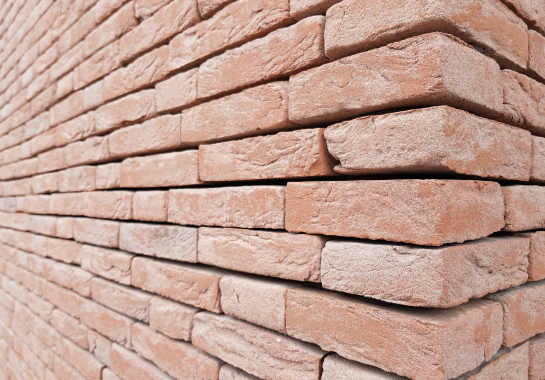Rosado
Did you know that ...
... the Heidebloem and Tiense Hoevesteen were by far the most popular products in the Nelissen range in the early days? The Heidebloem is comparable to the Rosado from today’s product range and today’s T16 approaches the colour of the Tiense Hoevesteen from back in the day. The Heidebloem was manufactured at Nelissen’s main factory in Kesselt and the Tiense Hoevesteen at their subsidiary in Tienen. The Heidebloem was the first multi-colour brick that Nelissen took to market. 'It was an innovative brick made of pink, yellow and grey clay from our own clay pit, marketed in addition to our red, yellow and grey bricks. It boosted production', Gaston Nelissen explains. The base colour of the Heidebloem is salmon pink. But the shades vary from yellow-pink to red-pink with slight nuances. The colour of the brick refers to a flower that is still common on the heath today. The brick is coated with fine silver sand. It is the coating process – a ball of clay is spun through sand of various colours and placed in a mould – that makes for multi-coloured bricks. On top of that, Nelissen expands the colour palette of the bricks by adding chalk or chemicals. Another successful brick was the Tiense Hoevesteen, which was popular for use in farmhouses. Farmhouse-style homes were very popular among builders of private homes back in the day.

Rosado
... the Heidebloem and Tiense Hoevesteen were by far the most popular products in the Nelissen range in the early days? The Heidebloem is comparable to the Rosado from today’s product range and today’s T16 approaches the colour of the Tiense Hoevesteen from back in the day. The Heidebloem was manufactured at Nelissen’s main factory in Kesselt and the Tiense Hoevesteen at their subsidiary in Tienen. The Heidebloem was the first multi-colour brick that Nelissen took to market. 'It was an innovative brick made of pink, yellow and grey clay from our own clay pit, marketed in addition to our red, yellow and grey bricks. It boosted production', Gaston Nelissen explains. The base colour of the Heidebloem is salmon pink. But the shades vary from yellow-pink to red-pink with slight nuances. The colour of the brick refers to a flower that is still common on the heath today. The brick is coated with fine silver sand. It is the coating process – a ball of clay is spun through sand of various colours and placed in a mould – that makes for multi-coloured bricks. On top of that, Nelissen expands the colour palette of the bricks by adding chalk or chemicals. Another successful brick was the Tiense Hoevesteen, which was popular for use in farmhouses. Farmhouse-style homes were very popular among builders of private homes back in the day.

Rosado
